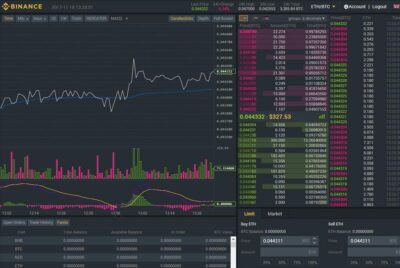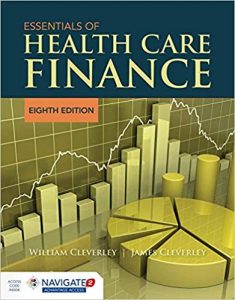Each trade order will be treated as a separate transaction subject to commission. An order that executes over multiple trading days may be subject to additional commission. One commission will be assessed for multiple trades, entered separately, that execute on the same day, on the same side of the market. For complete information on fees and commissions, refer to the WellsTrade Account Commissions and Fees Schedule.

With just one false positive in 1965, that’s a 90% hit rate overall. In 1965, the economy did enter a slowdown — not a recession — consistent with a portion of the economic theory above about the yield curve portending slower growth. The most followed yield curve term spread is the difference between the US 10-year yield and the US 2-year yield. The yield curve is said to be inverted when the 2-year rate yields more than the longer 10-year rate. The Private Bank offers products and services through Wells Fargo Bank, N.A., Member FDIC, and its various affiliates and subsidiaries.
Trade _
Over the first nine months of the year, the two largest ETFs—HYG and JNK—have sharply underperformed the average active manager, not to mention their own benchmarks . A long-running debate in asset allocation circles is how much of a portfolio an investor should…

Please note that any such statements are not guarantees of any future performance and actual results or developments may differ materially from those projected. While the fact that an inversion has preceded every recession over the past 70 years is noteworthy, there is more to the story. Wells Fargo and Company and its Affiliates do not provide tax or legal advice. This communication cannot be relied upon to avoid tax penalties. Please consult your tax and legal advisors to determine how this information may apply to your own situation. Whether any planned tax result is realized by you depends on the specific facts of your own situation at the time your tax return is filed.
It is also important to understand the objective of the fixed income allocation for each investor, which depends on risk tolerances, goals, and many other factors. We believe a fixed income allocation may be enhanced with the inclusion of active management to potentially mitigate downside risk while maintaining the integrity of the portfolio. Furthermore, Treasury exchange traded funds continue to be in focus as the U.S. 10-Year Treasury yield dropped to its 100-day moving average for first time in 4-months. For instance, if an investor thinks high yield is rich and likely to sell off in the next week or two, an ETF might be the way to play that. Because ETFs trade on exchanges like stocks, the investor could get in and out of the market quickly. ETFs also tend to overshoot in both directions, making them attractive for expressing short-term, tactical views.
Limited time offers expiring December 31, 2022.
The duration of the inversion is more important, as false-positive inversions can occur for brief periods based on a plethora of macro forces. There are more variables to consider than simply a curve inversion to determine if a recession is imminent. Real rates are currently negative and quantitative easing has suppressed the long end. Wells Fargo has provided this link for your convenience, but does not endorse and is not responsible for the content, links, privacy policy, or security policy of this website. WellsTrade® and Intuitive Investor® accounts are offered through WFCS. Now automated investing is easier with portfolios designed for positive impact.
In a 2018 study, the Federal Reserve’s San Francisco branch noted that since 1955, there have been six instances of yield curve inversion — each of which preceded a recession within six months to two years. More recently, there was yield curve inversion in 2019, prior to the onset of the coronavirus economic slump in 2020. We sell different types of products and services to both investment professionals and individual investors. These products and services are usually sold through license agreements or subscriptions. Our investment management business generates asset-based fees, which are calculated as a percentage of assets under management. We also sell both admissions and sponsorship packages for our investment conferences and advertising on our websites and newsletters.
- Safer Treasury and high-quality investment-grade securities.
- However, we think these periods highlight the potential benefits of actively managing a fixed income allocation.
- In a 2018 study, the Federal Reserve’s San Francisco branch noted that since 1955, there have been six instances of yield curve inversion — each of which preceded a recession within six months to two years.
- Rates did dip into negative territory in 2019 prior to the 2020 recession, but we know the 2020 recession was brought on by the pandemic.
An inverted yield curve is an unusual state in which longer-term bonds have a lower yield than short-term debt instruments. An inverted yield curve has historically been a reliable warning sign that a recession is coming, the inversion of the 2s10s being an especially ominous signal. But it’s just a sign, not the thing that causes a recession itself, and history also tells us that pinpointing exactly when the presumed recession will hit is hard to do.
Team-based wealth management
The last thing you want to do is take a long position right before a stock market crash. In a less liquid market like high yield, expense ratios are often not that different from those charged by actively managed funds. Those fees can be quite a drag on performance and often make it hard for ETFs to beat broad market benchmarks.
Being tied to an index also means ETFs can’t pick and choose their exposures the way active managers can. Many investors learned that the hard way this year when oil prices fell. That was bad news for energy bonds, which account for a sizable share of high-yield GKFX Forex Broker Introduction indices. Active managers could have strategically reduced their energy exposure. Since it is just a warning sign and not a causal factor, any inversion should be weighed against other economic indicators and placed within the greater macroeconomic context.

Rates did dip into negative territory in 2019 prior to the 2020 recession, but we know the 2020 recession was brought on by the pandemic. • The duration of the inversion matters, not just the inversion itself. Deposit products offered by Wells Fargo Bank, N.A. Member FDIC. An elevated financial experience to help you plan tomorrow the same way you pursue today. Data is provided by various sources and prepared by Stringer Asset Management, LLC and has not been verified or audited by an independent accountant.
_ ETF
The offers that appear in this table are from partnerships from which Investopedia receives compensation. Investopedia does not include all offers available in the marketplace. Transparency is how we protect the integrity of our work and keep empowering investors to achieve their goals and dreams. And we have unwavering standards for how we keep that integrity intact, from our research and data to our policies on content and your personal data.
BofA’s analysts indicate that the average and median length of time between inversion and the start of a recession is 15.1 and 16.3 months, respectively, according toCNBC. ETFs trade like stocks, are subject to investment risk, fluctuate in market value and may trade at prices above or below the ETFs net asset value. The views expressed in this material are the views of the SPDR Research and Strategy team through the period ended March 30, 2022 and are subject to change based on market and other conditions. This document contains certain statements that may be deemed forward-looking statements.
We’re represented by 70 offices in 30 different locations, with local expertise strengthened by global service. The curve has flirted with inversions in the past few years. This occurred back in How to choose stocks for long term investment August of 2019 and again earlier this year in April. However, shortly after both instances, the curve reverted back to normal. Needs to review the security of your connection before proceeding.
If we start to have quantitative tightening — where the central bank begins to wind down the balance sheet — it could put upward pressure on long-term rates and potentially steepen the curve. Another reason why this week’s very brief inversion should be discounted as a persistent trend. With so many other variables impacting the pace of the economy over a six- or 24-month duration, it’s hard to conclude that an inverted yield curve indicates a recession is imminent. While the yield curve inverted in 2019 and a recession followed in 2020, the reason for the recession was a global pandemic.
In a recent client meeting I was asked, “What is the yield curve telling you? ” I responded that both rates are nearly the same — and I was serious. Right now, the yield curve is not telling me much about a looming recession, the question Calculating Return on Investment for beginners the client was really asking. Research shows that an inverted yield curve has predated the last nine recessions, with one false positive.1 It’s usually talked about as a reliable indicator that a recession may be on the horizon.
Interest rates and inflation
On the other hand, you don’t have to exit your SPY stock position completely. Keep in mind that the most recent stock market crash was due to the Covid-19 pandemic, which had nothing to do with the prior yield curve inversion. Besides, there is typically a time lag between yield curve inversions and subsequent stock market crashes. If stocks are going to crater, it is not likely to happen immediately. Bond market participants view yield curve inversion as a reliable predictor of economic contraction, making FTSD’s status as an active fund with minimal credit risk all the more relevant in the current market climate.
